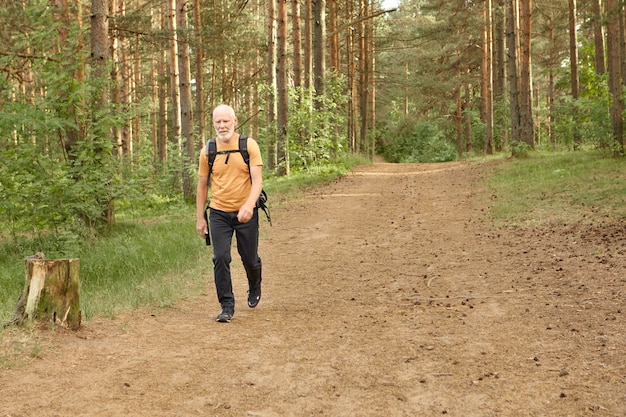
What are the most difficult hikes in Europe? Well, we’ve put together a list of the toughest hikes you can find across Europe. Since we all hope things will get better with the COVID-19 situation and travel restrictions will be lifted, it’s a great time to start planning your next hiking adventure!
Walking, in particular, is one of the safest travel methods as it lets you stay away from crowds. Hiking offers a fantastic way to explore a new country while boosting your fitness levels. Plus, it allows for social distancing while soaking in the beauty of nature.
We’ve already discussed some of the best hikes in Europe, but this time we are diving into more strenuous hikes that require serious stamina. Challenging yourself on these hikes can significantly improve your fitness, making hiking an excellent exercise for building up your endurance and strength.
So, while you wait for summer and the lifting of restrictions, check out our roundup of Europe’s most difficult hikes.
First up is the Grande Randonnée (GR) 20 route, which many call “Europe’s toughest long-distance trek.” This trail cuts diagonally across Corsica, a beautiful French island in the Mediterranean. Standing at a maximum altitude of 2,134 meters, the GR 20 stretches about 180 kilometers with a staggering 12,000 meters of elevation gain. Completing this trek usually takes around 15 days.
The GR 20 is divided into sections, so if you aren’t up for the entire trail, you can hike just a part of it. Along the way, you’ll find mountain refuges where you can stay since it’s not allowed to pitch tents along the route. Thanks to its stunning views and challenging nature, the GR 20 is considered one of the top trails worldwide and undoubtedly one of Europe’s most difficult hikes.
Next is the GR 10, a hike that runs the length of the Pyrenees Mountains along the French-Spanish border. You can choose to walk the GR 10 from west to east or vice versa. This trail spans about 866 kilometers with an elevation gain of 48,000 meters, taking roughly 52 days to complete.
The scenery along the GR 10 is breathtaking, featuring green rolling hills, mountains, lakes, rocky cliffs, and ocean views. You have several accommodation options like hotels, hostels, and basic mountain huts. In some remote areas, hikers need to be self-sufficient and may have to camp. The GR 10 is well-marked with red and white symbols, making it easy to follow even if you decide to hike it in sections.
Another challenging hike is the Eagle Walk (Adlerweg) in the Austrian state of Tirol. This long-distance hike covers a total length of 420 kilometers with about 31,000 meters of elevation gain. Completing the entire Eagle Walk takes around a month. The route is divided into two parts: a 24-stage hike in North Tyrol and a 9-stage trek in East Tyrol, which are not connected.
Both routes traverse several mountain ranges and take you through some of Austria’s most stunning alpine scenery, including rugged mountains, waterfalls, ice caves, and blooming meadows. The Eagle Walk can also be broken down into manageable sections, with trails clearly marked to help you along the way.
The Tour of Monte Rosa (TMR) is one of the most picturesque and tough hikes in the Alps, making it one of Europe’s most challenging treks. This loop trail goes through high alpine terrain in Italy and Switzerland, circling Monte Rosa, the second-highest mountain in the Alps and Western Europe. The TMR spans 164 kilometers and typically takes about 11 days to complete. The views are spectacular, featuring iconic 4000-meter peaks like Dufourspitze, Breithorn, and Matterhorn, along with beautiful scenery of green valleys, snow-capped mountains, and glaciers.
Another remarkable hike is the Tour du Mont Blanc (TMB), a 170-kilometer trail that traverses France, Italy, and Switzerland. Mont Blanc is the highest mountain in the Alps and Western Europe, making this trek one of the most renowned long-distance hikes globally. The TMB encircles the Mont Blanc Massif, taking around 11 days to complete. You’ll find yourself walking through mountains, forests, tiny villages, and blooming wildflower fields. There are hotels and mountain huts available along the route, which are open from June to September. You can also camp if you prefer self-sufficiency. If 11 days feels too long, there are many shorter hikes around the Mont Blanc massif to choose from.
Finally, we have the Walker’s Haute Route, a demanding high-altitude hike in the French and Swiss Alps. Starting in Chamonix, France, and ending in Zermatt, Switzerland, completing this trek typically takes about 14 days. The trail goes beneath some of the tallest peaks of the Alps and crosses several mountain passes, offering breathtaking alpine views.
So, if you’re looking to challenge yourself with some of the most demanding hikes Europe has to offer, these trails are your best bets!